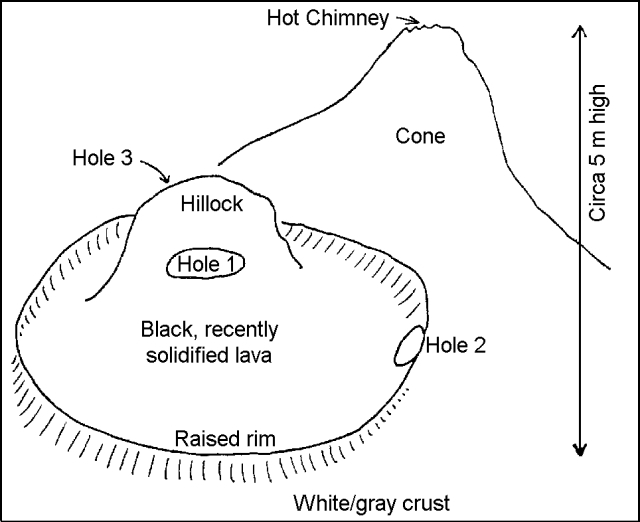Report on Ol Doinyo Lengai (Tanzania) — April 1988
Scientific Event Alert Network Bulletin, vol. 13, no. 4 (April 1988)
Managing Editor: Lindsay McClelland.
Ol Doinyo Lengai (Tanzania) Lava production from one vent
Please cite this report as:
Global Volcanism Program, 1988. Report on Ol Doinyo Lengai (Tanzania) (McClelland, L., ed.). Scientific Event Alert Network Bulletin, 13:4. Smithsonian Institution. https://doi.org/10.5479/si.GVP.SEAN198804-222120
Ol Doinyo Lengai
Tanzania
2.764°S, 35.914°E; summit elev. 2962 m
All times are local (unless otherwise noted)
Climbers who reached the summit on 17 January and 3 April reported continuing lava production from one vent that had been active in December 1987 (13:01).
When David Peterson and others arrived at the crater rim on 17 January, no lava was emerging from any of the vents, but there was a loud noise as if steam were escaping at high pressure, probably from T7. After some time, that noise suddenly stopped and a quiet gurgling/bubbling noise began as lava started to flow from the W side of T7.
A Mountain Club of Kenya party led by Frank Barnes climbed the volcano from the W side on 3 April, walked around the crater rim, down to the crater floor, and up to the summit, S of the active N crater. They described the crater floor as "corded and ropy" and "cracked." Steam and sulfurous fumes were being emitted from various vents on the outer slopes and rim. "A rhythmic gushing noise every 4-5 seconds . . . just like sea waves breaking at the foot of a cliff" originated from a vent at the NE corner of the crater floor (probably T7). Dark lava was splashing up from T7; the tops of the splashes were just visible, level with the crater floor. Closer inspection revealed other holes connected with an inner "cave" where black liquid was splashing; large splashes occasionally emerged from one hole (figure 5). Much heat was emitted from the vent. Another observer described lava masses about the size of footballs being ejected to ~10 m height about every 30 seconds. Minor steam emission from some other vents on the crater floor was only evident on close inspection. Photographs by A. Khan show the appearance of the N crater to be very similar to that of November and December 1987; no new vents appear to have formed since then.
 |
Figure 5. View of Ol Doinyo Lengai's active vent T7 on 3 April 1988, traced by C. Nyamweru from a sketch by Frank Barnes. |
Geological Summary. The symmetrical Ol Doinyo Lengai is the only volcano known to have erupted carbonatite tephras and lavas in historical time. The prominent stratovolcano, known to the Maasai as "The Mountain of God," rises abruptly above the broad plain south of Lake Natron in the Gregory Rift Valley. The cone-building stage ended about 15,000 years ago and was followed by periodic ejection of natrocarbonatitic and nephelinite tephra during the Holocene. Historical eruptions have consisted of smaller tephra ejections and emission of numerous natrocarbonatitic lava flows on the floor of the summit crater and occasionally down the upper flanks. The depth and morphology of the northern crater have changed dramatically during the course of historical eruptions, ranging from steep crater walls about 200 m deep in the mid-20th century to shallow platforms mostly filling the crater. Long-term lava effusion in the summit crater beginning in 1983 had by the turn of the century mostly filled the northern crater; by late 1998 lava had begun overflowing the crater rim.
Information Contacts: C. Nyamweru, Kenyatta Univ; A. Khan and B. Khan, Nairobi, Kenya; F. Barnes, Nairobi, Kenya; K. Schmitt, Nairobi, Kenya; G. Bronner, Wamba, Kenya; K.F. Dougherty, Nairobi, Kenya; A. Brink, Kikuyu, Kenya.

